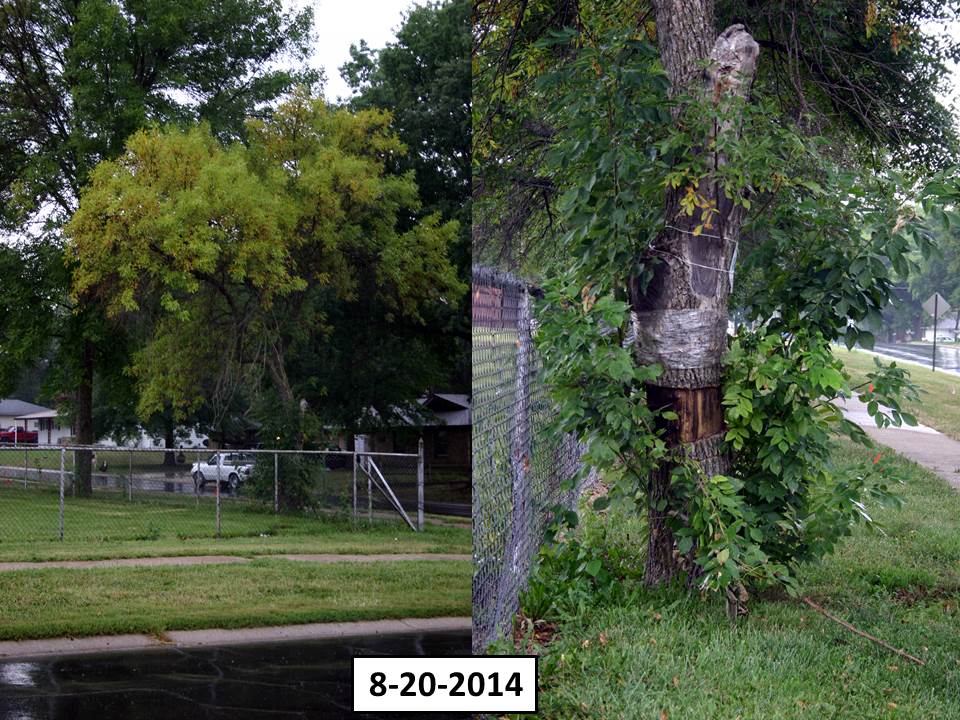–Dr. Bob Bauernfeind
Emerald ash borer surveillance activities began in 2008 when USDA APHIS PPQ in Topeka received purple prism traps from the US Forest Service (USFS). From 2008 through 2015, PPTs have been deployed throughout Kansas in a cooperative program between USDA APHIS PPQ and Kansas Department of Agriculture (KDA) personnel. This year, Lindgren traps were also utilized in trapping efforts. THERE WERE NO EAB BEETLES COLLECTED FROM TRAPS THIS YEAR! This was the final year of trapping efforts by USDA APHIS PPQ and Kansas Department of Agriculture (KDA) personnel because the US Forest Service will be contracting out trapping efforts.
Additionally, in an attempt to enhance the early detection on EAB presence, KDA workers initiated tree girdling activities in 2013 — the premise being that removal of an 8-12 inch portion of bark and phloem tissues encircling the entire trunk disrupts the translocation of water and carbohydrates (tree nutrients) creating a stress which causes a change in the aromatic chemicals produced and released by the bark, leaves and wood. Also, tree foliage becomes more attractive to beetles due to altered coloration (reflected light wavelengths). Increased beetle presence equals increased egg laying which equals increased larval activities. Substantiation of the presence of EAB would be based on the recovery of larvae in the subsequent peeling of the bark from branches and trunks. On September 30, EAB larvae were recovered from a girdled tree in the town of Eudora. Thus the intrastate quarantine in place for Wyandotte, Johnson and Leavenworth counties was expanded to include Douglas County.
In an interesting note, in 2014, no EAB larvae were recovered from a trap tree at the same site.
Note the Red Arrow —- That was this year’s girdled trap tree from which the current larvae were recovered. Old gallery patterns were indicative of the presence of EAB already in 2014. Obviously that tree was initially attacked by EAB without its having been girdled to attract beetles. Also, looking at the trees lining the street, EAB are likely present and responsible for their deterioration.

